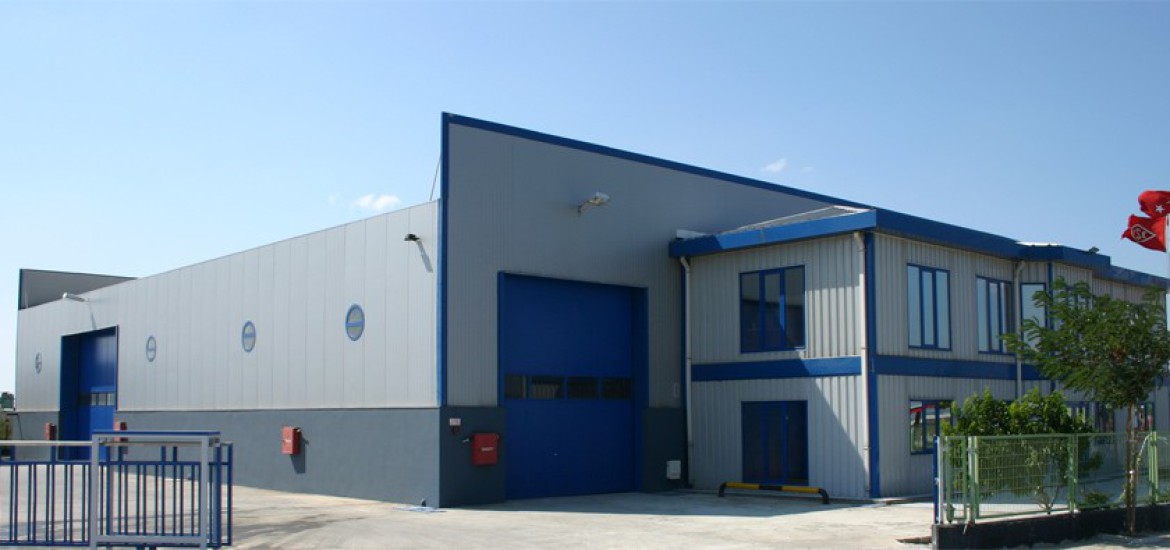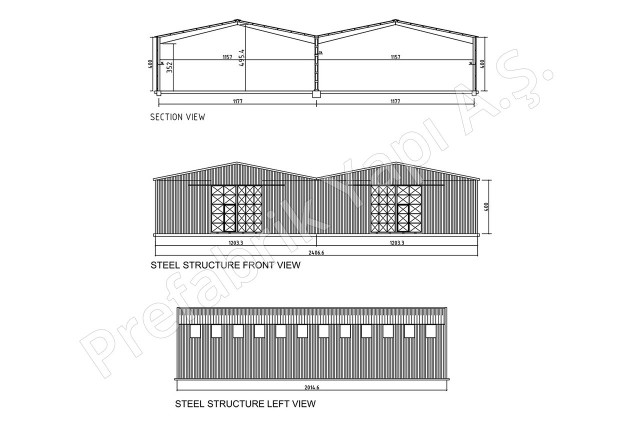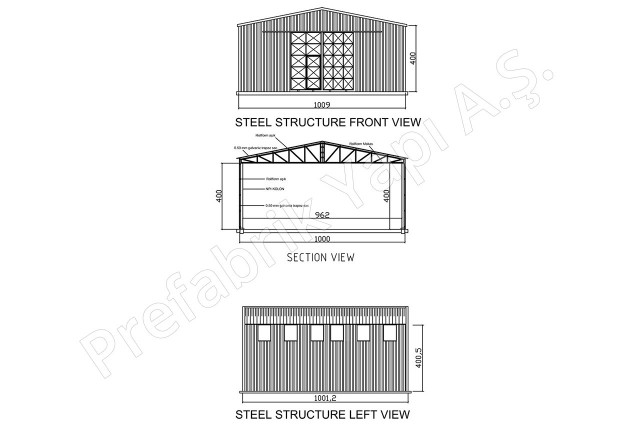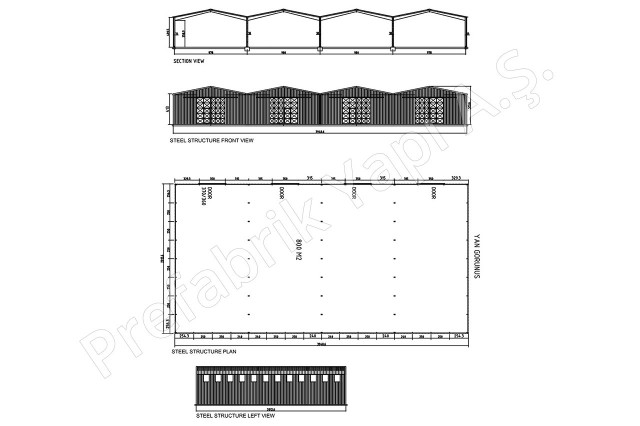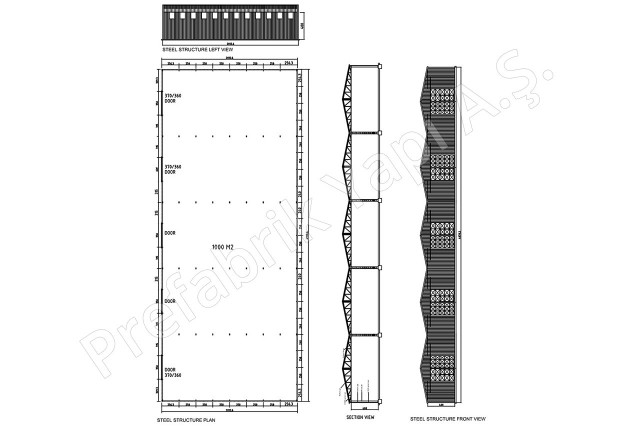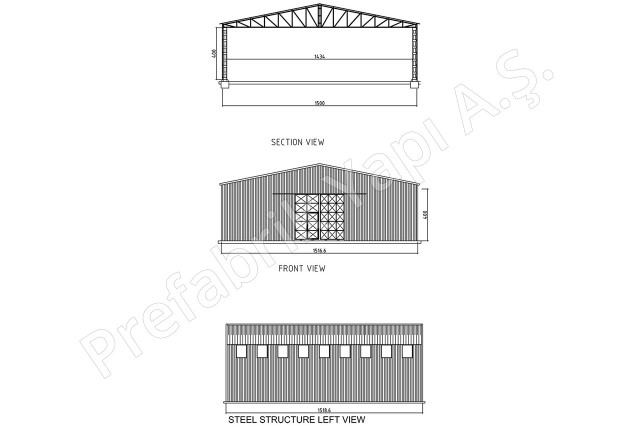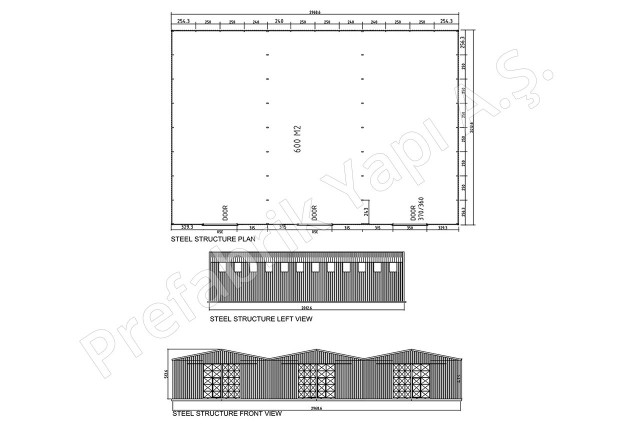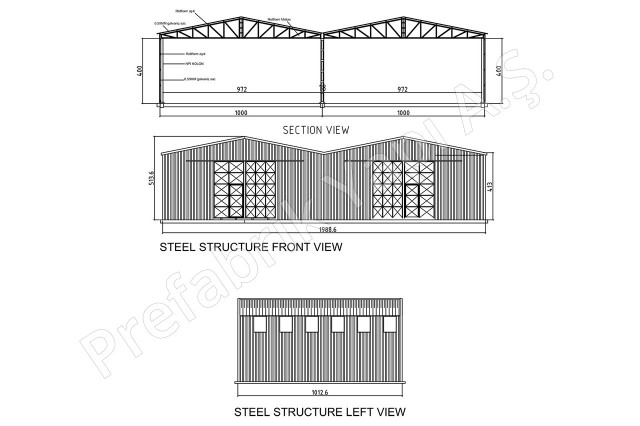Steel Building
Pre-Engineered Steel BuildingsSteel building systems offer durable, cost-effective, and long-lasting solutions for industrial, agricultural, and commercial purposes.With fast installation, low maintenance, and customizable designs, they provide a modern and reliable alternative to traditional construction methods.
What Is a Steel Building?
A steel building is a type of structure constructed using steel as the primary structural material. Known for its durability and adaptability, this construction method has become a popular choice for both industrial and residential purposes. The core of a steel framed building is typically made from columns and beams that are pre-engineered to fit together with precision.
These buildings stand out for their resistance to environmental stressors and are less prone to damage compared to traditional buildings. As a result, building a steel building is considered a modern solution, especially for projects that require fast assembly and long-term structural integrity. Their modular design allows for easy expansion and customization.
Steel Building - Standard Plans
Features of Steel Building Systems
Steel building systems come with a range of features that make them highly desirable in modern construction. One of the key features is their flexibility. A steel frame building structure can be tailored to meet the specific requirements of a project, whether it’s for commercial, residential, or industrial use. Additionally, these buildings are engineered for quick installation, which saves both time and labor costs.
Another notable feature is the minimal maintenance they require. Thanks to their rust-resistant coatings and robust materials, these buildings maintain their condition for decades. Whether you’re considering a steel frame metal building for storage or workspaces, the system ensures superior load-bearing capacity and long-term value. They are also eco-friendly, as most steel materials are recyclable.
Installation Methods for Steel Building Systems
There are several methods used for the installation of steel building systems, each designed to maximize efficiency and ensure safety. Pre-engineered kits are one of the most common, where components are fabricated off-site and transported for rapid on-site assembly. This method significantly reduces construction time and minimizes material waste.
Another method involves modular construction, where parts of the building are preassembled and then lifted into place. This technique is often used in large-scale commercial and agricultural steel buildings. Regardless of the installation approach, professional guidance ensures that the metal steel building meets all safety and compliance standards during setup.
Advantages of Using Steel Buildings
One of the most significant benefits of using a steel building is its strength-to-weight ratio, which allows for greater structural integrity without adding unnecessary bulk. These buildings are engineered to withstand heavy loads, seismic activity, and extreme weather conditions, making them ideal for demanding environments. The non-combustible nature of steel also offers added protection against fire hazards.
Additionally, building with steel frame materials supports sustainability goals. Most steel components are recyclable and leave a smaller carbon footprint compared to traditional construction materials. The faster assembly times and reduced labor needs also translate into lower overall project costs. Whether for industrial or commercial use, these systems offer long-lasting performance and reliability.
Common Usage Areas of Steel Buildings
Steel buildings are used across various sectors due to their adaptability and robust construction. In the agricultural industry, they serve as barns, machinery storage units, and animal shelters. Their ability to span large distances without internal columns makes them perfect for open layouts. This is why many turn to agricultural steel buildings for flexible, durable solutions.
In addition to agricultural applications, they are widely used in warehouses, factories, retail centers, and even residential garages. Their modularity and quick installation make them a favorite choice for temporary and permanent structures alike. From aviation hangars to office complexes, steel framed building systems meet the needs of numerous industries.
Steel Buildings for Sale
Finding steel buildings for sale is easier than ever thanks to specialized manufacturers and suppliers offering customizable options. These buildings are often available in a variety of sizes, styles, and configurations to meet different operational requirements. Buyers can select features like insulation, ventilation, and exterior finishes during the ordering process.
Whether you’re looking for a small workshop or a large warehouse, the market offers extensive options. Working with a trusted provider ensures that the selected steel frame building construction meets all necessary building codes and structural requirements. Ready-to-ship kits and tailored solutions are both widely available for short lead times.
Steel Building Pricing
The cost of a steel building varies depending on factors such as size, design complexity, materials used, and location. While initial pricing may seem high compared to traditional methods, the long-term savings in maintenance, energy efficiency, and durability often make it a more economical option. Moreover, the modular nature of these systems reduces construction waste and labor costs significantly.
Customization also influences pricing. Features like high-grade insulation, reinforced panels, and specialty coatings can affect the total cost. It’s also important to factor in transportation and assembly expenses. Whether you’re planning a commercial warehouse or a steel frame metal building for personal use, accurate pricing should be determined through a professional assessment of your specific needs.
Average Price Per m² of a Steel Building
The average cost of a steel building typically ranges between $500 to $1,000 per m², depending on specifications. Basic models come at a lower cost, while custom designs with enhanced features or finishes can be priced higher. These estimates include materials and standard installation but may exclude land preparation or local permit fees.
Things to Consider When Buying Steel Building Profiles
When purchasing steel building profiles, it’s crucial to assess the quality and grade of steel used, as this directly impacts the building’s durability and safety. Not all steel is created equal; structural steel must meet industry standards to ensure long-term performance. Always verify that the provider offers certified and tested materials for your project.
Other key factors include warranty coverage, customization options, and supplier reputation. The layout and future usage of your steel frame building structure should also guide your choice of profiles. Opt for designs that allow for flexibility in case you need to expand or modify the building later. Consulting with an expert ensures a safe and functional investment.
How to Order a Custom Steel Building System?
Ordering a custom steel building system involves several key steps that ensure the structure aligns with your project goals. First, identify the purpose of your building—whether it’s for industrial, commercial, or agricultural use. Then, work with a provider who offers customization in dimensions, layout, and material options. The design stage includes choosing the right steel frame building construction method and any special features like doors, windows, or mezzanine floors.
Once specifications are confirmed, the provider creates detailed engineering plans and begins fabricating the components. During this phase, it’s important to verify that all elements meet regional building codes. Timely communication with the supplier guarantees that your metal steel building will be delivered and installed as planned, without unnecessary delays or cost overruns.
Maintenance and Longevity of Steel Buildings
Steel buildings are well known for their low maintenance requirements and long service life. Their resistance to corrosion, pests, and moisture-related damage makes them an ideal option for those looking for a structure that will last for decades with minimal upkeep. Routine inspections, especially around joints and seams help identify any minor issues before they escalate.
Applying protective coatings and repainting exposed surfaces periodically can extend the life of the building even further. Additionally, since steel does not warp, crack, or settle like other materials, structural issues are rare. With basic preventive care, a steel framed building can maintain its functionality and appearance for 50 years or more, offering exceptional return on investment.
Insulation and Energy Efficiency in Steel Buildings
Energy efficiency is an important consideration when designing steel buildings. Proper insulation reduces heating and cooling costs significantly while also improving indoor comfort. Since metal conducts heat easily, insulation is essential to maintain thermal stability throughout the year. Choosing the right materials can also reduce condensation and improve air quality inside the building.
Insulated steel frame buildings not only save money but also support environmentally sustainable construction. Advances in insulation technology have made it easier to meet energy efficiency standards without compromising design or performance. When planned correctly, these systems provide year-round energy savings and improved operational efficiency.
Best Insulation Options for Steel Buildings
The most effective insulation types for steel buildings include spray foam, fiberglass batts, and rigid foam panels. Spray foam offers excellent air sealing, while fiberglass is cost-effective and easy to install. Rigid panels provide high R-values and are ideal for walls and roofs, offering consistent thermal performance.

